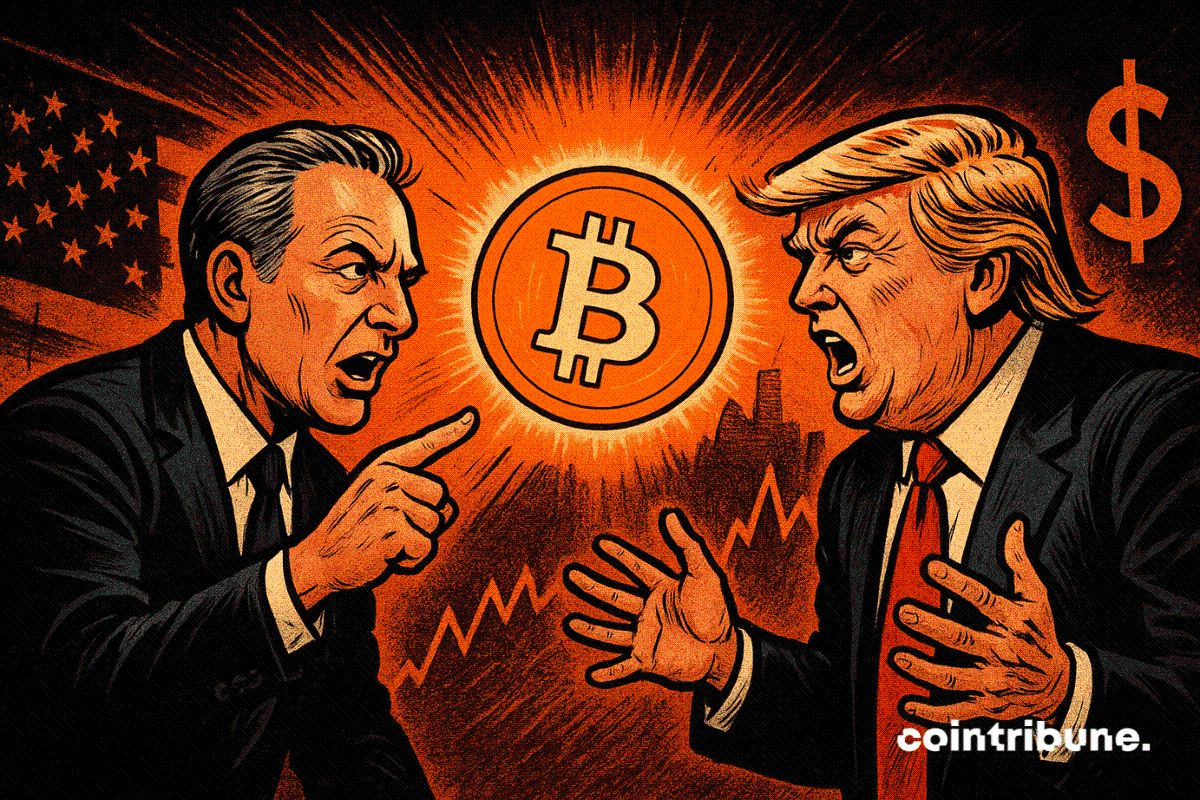The Volatility Trap: How Whale Activity and Thin Order Books Are Redefining Crypto Risk Management
- XPL and WLFI tokens exemplify 2025 crypto's volatility trap, with 200% price surges and 25% drops driven by thin order books and whale activity. - Whale trades trigger cascading effects: XPL's $20M accumulation caused short squeezes, while WLFI's $27M outflows led to liquidity collapses. - Investors must adopt multi-layered risk strategies: limit leverage on low-volume tokens, monitor NVT ratios, and diversify with Ethereum. - Institutional best practices include 80% cold storage and proof-of-reserve aud
In 2025, the crypto market has become a high-stakes arena where liquidity is a currency of its own. Emerging tokens like XPL (Plasma) and WLFI (World Liberty Financial) have epitomized the volatility trap—a phenomenon where thin order books and whale-driven manipulation create explosive price swings, leveraged short squeezes, and liquidity black holes. For investors, understanding these dynamics is no longer optional; it's a survival imperative.
The Fragility of Thin Order Books
Order book depth—the volume of buy and sell orders at various price levels—is the bedrock of market stability. Tokens with thin order books, like XPL and WLFI, are akin to house-of-cards portfolios. A single large trade can trigger cascading price movements.
Take XPL's 200% surge in two minutes in August 2025. A whale executed a multi-million-dollar buy order on a thinly traded asset, triggering a Hyperliquid short squeeze. Short sellers, forced to cover positions, amplified the upward spiral. Conversely, WLFI's 25% drop in 12 hours was fueled by whale withdrawals and liquidity shocks, erasing $412,000 from a 3x leveraged position.
Whale Activity: Catalyst or Crisis?
Whales—holders of large token balances—act as both architects and wreckers of market stability. In XPL's case, a whale's strategic accumulation of 20 million tokens exploited the order book's fragility, creating a short squeeze. For WLFI, whale outflows of $20 million and $7 million in July and August 2025 signaled impending doom.
The lesson? Whale movements are leading indicators. On-chain tools like wallet tracking and transfer monitoring can reveal early warnings. For instance, WLFI's $4.4 million outflows before its 25% drop were a red flag for leveraged traders.
Liquidity Risks in 2025: A New Normal
WLFI's centralized governance (40% held by the Trump family) and speculative appeal have made it a poster child for liquidity risk. Its 150% 30-day volatility dwarfs Bitcoin's 3%, exposing the dangers of over-leveraged positions.
Meanwhile, XPL's price prediction models—projecting a rise from $0.5002 in August 2025 to $1.74 by 2050—ignore the reality of market chaos. Volatility is not a line on a chart; it's a force of nature.
Risk Management: Beyond Stop-Losses
Traditional risk management tools are inadequate in this environment. Investors must adopt a multi-layered approach:
1. Cap leverage at 2x for tokens with daily volumes below $10 million.
2. Monitor on-chain metrics:
- NVT Ratio: A rising NVT (Network Value to Transactions) signals overvaluation.
- Open Interest (OI): Declining OI during rallies indicates weakening momentum.
3. Diversify across asset classes, balancing high-risk tokens with large-cap assets like Ethereum .
The Investor's Playbook for 2025
- Avoid Over-Leveraging: Retail traders should steer clear of 3x positions in illiquid tokens.
- Audit Liquidity: Use on-chain platforms to track whale activity and order book depth.
- Cold Storage Discipline: Institutional investors should allocate 80% of assets to cold wallets and audit exchanges for proof-of-reserve compliance.
Conclusion
The XPL and WLFI cases are cautionary tales of a market where liquidity is a fleeting illusion. As whale activity and thin order books redefine risk, investors must adapt. The volatility trap isn't just a technicality—it's a test of discipline, strategy, and resilience. In 2025, survival hinges on recognizing that the next short squeeze or liquidity shock could be just a whale's trade away.
Disclaimer: The content of this article solely reflects the author's opinion and does not represent the platform in any capacity. This article is not intended to serve as a reference for making investment decisions.
You may also like
The Federal Reserve is likely to implement a hawkish rate cut this week, with internal "infighting" about to begin.
This week's Federal Reserve meeting may feature a controversial "hawkish rate cut." According to the former Vice Chair of the Federal Reserve, the upcoming 2026 economic outlook may be more worth watching than the rate cut itself.
Discover How ZKsync Fast-Tracks Blockchain Security
In Brief ZKsync Lite will be retired by 2026, having achieved its goals. ZKsync team plans a structured transition, ensuring asset security. Future focus shifts to ZK Stack and Prividium for broader application.

Bittensor Follows Bitcoin Path With TAO Halving

Mining Sector Falls 1.8 % Despite Bitcoin Rally
